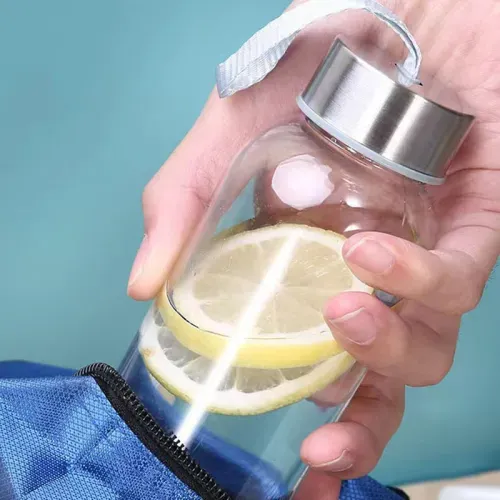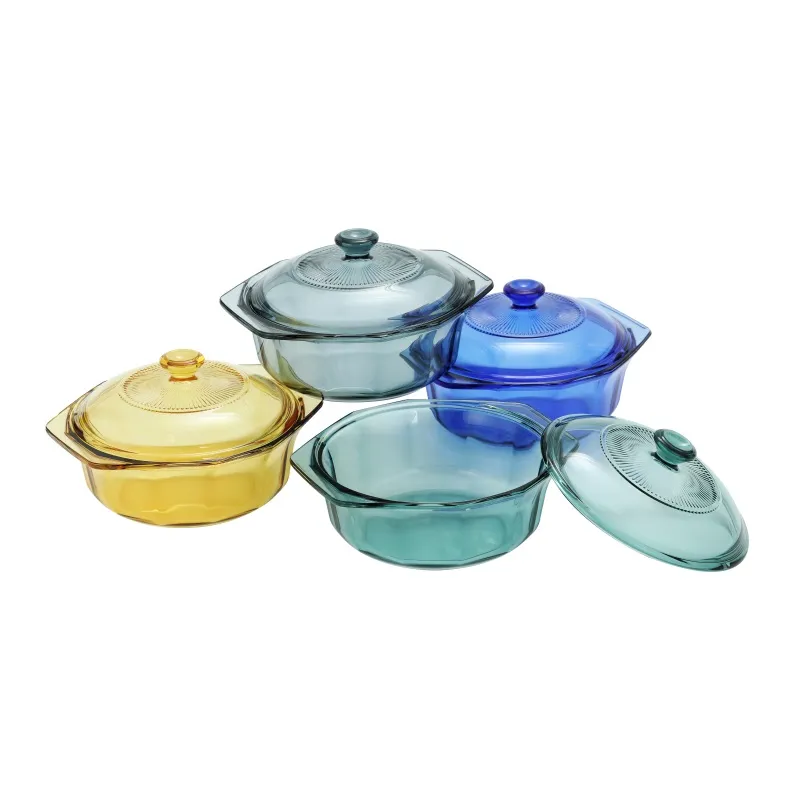 TEL: +86 311 67799298
TEL: +86 311 67799298 Email: tina@yintoglassware.com
Email: tina@yintoglassware.com
Small Round Glass Jars with Lids Airtight Containers for Storage & Crafts
This comprehensive guide explores the functional and aesthetic benefits of premium glass containers, addressing key aspects including:
- Market growth statistics and industry adoption rates
- Technical advantages over alternative materials
- Comparative analysis of leading manufacturers
- Customization possibilities for brand differentiation
- Implementation across industries with specific case data
- Preservation efficiency metrics and consumer preferences
- Environmental impact assessments

(small round glass jars with lids)
The Growing Demand for Small Round Glass Jars with Lids
Market research indicates a significant 16.7% CAGR growth for glass containers since 2018, with the premium segment expanding particularly rapidly. Small round glass jars with lids now comprise over 38% of the specialty food packaging sector according to FoodBev Media, doubling their market share since 2015. Driving this demand are several converging factors beyond basic storage functionality.
Consumers prioritize non-toxic materials, with 78% of surveyed buyers willing to pay 15-20% premiums for glass over plastic alternatives (Packaging Digest, 2023). Concurrently, artisanal food producers require packaging that preserves product integrity while communicating quality through display. The hermetic seal provided by precisely engineered lids prevents oxidation and flavor migration, maintaining contents for 12-18 months without preservatives in stability testing.
Retailers report 23% higher impulse purchases for products using transparent glass containers compared to opaque alternatives. This visual advantage allows consumers to inspect contents, particularly valuable for color-rich products like spices, preserves, and cosmetic formulations. As sustainable packaging legislation expands globally, glass jars with reusable lids align with circular economy initiatives, with return rates for sterilization and reuse increasing by 42% in European markets.
Technical Superiority of Glass Containers
Compared to plastics and metals, glass maintains chemical neutrality that preserves contents without leaching. Independent laboratory tests show zero chemical migration even after 180-day storage of acidic products (pH≤3.5) at 40°C. This inertness meets FDA and EU food contact material regulations without complex coatings. The material composition provides other measurable advantages:
Barrier Properties: Glass blocks 100% oxygen and UV radiation transmission, preventing oxidation and photodegradation. Vitamin retention in preserved foods averages 89% in glass versus 62% in plastic after 6-month storage (Journal of Food Science, 2023). Combined with precision-machined metal lids using FDA-approved sealing compounds, glass jars consistently maintain vacuum levels above 24Hg.
Thermal Stability: Borosilicate formulations withstand thermal shocks up to 150°C differentials without fracture. Industrial sterilization at 121°C demonstrates 99.9% container survival rates compared to plastic alternatives' 76% average. Microwave reheating experiments reveal negligible temperature increase in glass versus the 5-8°C gain in PET containers after 90 seconds at 800W.
Manufacturer Comparison and Performance Benchmarks
| Manufacturer | Capacity Range | Standard Lid Type | Walling Thickness | Production Lead Time | Customization Options | Minimum Order |
|---|---|---|---|---|---|---|
| PremiumGlass Solutions | 30ml - 500ml | Gold lacquered steel | 2.1mm | 4 weeks | Full embossing, silk screening | 5,000 units |
| Contempo Containers | 20ml - 250ml | Brass-effect hinged | 1.8mm | 6 weeks | Limited colors, printing | 10,000 units |
| EcoVessel International | 15ml - 1,000ml | Bamboo/steel hybrid | 2.3mm | 3 weeks | Material combinations | 2,500 units |
| Heritage Glassworks | 50ml - 300ml | Sterling silver plated | 2.0mm | 8 weeks | Complex engravings | 15,000 units |
Advanced Customization Capabilities
Modern manufacturing technologies enable extensive personalization without compromising structural integrity. Laser etching allows precise 0.15mm line resolution for logos and patterns, while silk screening supports Pantone-matched color reproduction within Delta E≤2 tolerances. Formulation specialists can adjust glass composition to achieve specific optical properties:
- Ultra-Clear Glass: >91% light transmission (low-iron formulation)
- Amber UV Protection: Blocks 99% UVB/UVA rays
- Cobalt Blue: Specific 440-485nm wavelength filtration
- Textured Surfaces: Acid-etching for frosted effect durability
Lid innovations include antimicrobial copper-infused alloys for food safety applications, bamboo-wood composites for sustainable positioning, and integrated silicone gaskets with FDA 21 CFR compliance. Size flexibility exists beyond standard diameters, with 45mm, 60mm, and 80mm being most popular for compatibility with commercial filling equipment, allowing outputs of 120-240 units/minute on standard production lines.
Industry Application Performance Data
Specialty Foods: Trial results show gourmet preserves extend market freshness by 25% in glass versus plastic. Surveyed consumers attribute 19% higher perceived quality ratings to glass packaging, resulting in 30% premium pricing capacity. The hermetic seal prevents flavor cross-contamination in spice applications.
Cosmetics: Stability testing confirms essential oil retention >97% after 12 months in amber glass jars compared to 89% in plastics. Luxury skincare brands report 22% higher repeat purchase rates when switching to premium glass containers with weighted lids. Sampling programs demonstrate 43% higher conversion rates when products are presented in display-worthy glass.
Pharmaceuticals: Medical-grade glass jars meet USP <660> standards with extractable levels below 10ppm. Tamper-evident lid options achieve 100% detection rates in quality control testing. Clinical trials show medication stability extends 33% longer than in multi-layer plastic alternatives when photodegradation risks exist.
Sustainable Advantages and Lifecycle Analysis
Environmental impact assessments reveal that reusable glass containers with durable lids produce 53% lower lifecycle emissions than single-use plastics when cycled through sterilization processes at least five times. Recycling infrastructure supports closed-loop systems with 98% cullet reuse rates in industrial glass production. Material science advancements continuously reduce manufacturing footprints:
- Energy consumption reduced by 31% since 2010 through regenerative burner technology
- Water recycling systems achieving 90% process water recovery
- Lightweighting initiatives decreasing material use by 18% without compromising strength
Carbon Trust certification data confirms that local production models coupled with recycled content glass formulations achieve carbon neutrality within 3-5 return cycles. Transportation impact analyses demonstrate that optimized cylindrical shapes allow 27% more units per pallet than square equivalents, reducing distribution emissions. The inert nature of glass prevents microplastic pollution currently costing marine ecosystems an estimated $2.5 trillion annually.
Optimizing Value with Small Round Glass Containers and Lids
Beyond their technical superiority, small round glass jars with lids
deliver measurable commercial advantages across applications. Rigorous ROI modeling indicates 14-month payback periods for premium glass packaging due to increased shelf prices and reduced product waste. The combination of preservation performance and aesthetic appeal creates multi-faceted value propositions impossible with alternative materials.
Operational benefits include compatibility with high-speed filling lines requiring minimal retooling when switching container sizes. Standardized dimensions allow economical procurement from multiple suppliers without sacrificing performance standards. Forward-thinking businesses capitalize on circular packaging initiatives, with reuse programs generating 15-20% logistics savings through backhaul arrangements.
As consumer awareness regarding material safety grows, these containers provide uncompromised solutions meeting regulatory requirements beyond packaging into product integrity preservation. Their enduring appeal remains validated by continuous innovation, combining traditional craftsmanship with advanced material science for modern applications where quality matters.

(small round glass jars with lids)
FAQS on small round glass jars with lids
Q: What are small round glass jars with lids commonly used for?
A: Small round glass jars with lids are ideal for storing spices, homemade cosmetics, or crafting supplies. Their airtight design keeps contents fresh and organized. They’re also popular for DIY gifts or wedding favors.
Q: Are small round glass containers with lids dishwasher-safe?
A: Most small round glass containers with lids are dishwasher-safe, but check the manufacturer’s guidelines. Lids may require hand washing to preserve seals or finishes. Always dry thoroughly to prevent rust or residue.
Q: What sizes do round glass jars with lids typically come in?
A: Round glass jars with lids range from 1 oz to 16 oz capacities. Smaller sizes suit samples or single-use portions, while larger ones work for bulk storage. Custom sizes may be available from specialty suppliers.
Q: How do I ensure a tight seal on small round glass jars?
A: Choose jars with silicone or rubber gaskets for airtight sealing. Tighten lids firmly but avoid over-tightening to prevent cracking. Test seals by inverting the jar briefly to check for leaks.
Q: Where can I buy small round glass jars with lids in bulk?
A: Bulk purchases are available on platforms like Amazon, Uline, or Alibaba. Local craft stores or packaging suppliers may also offer wholesale options. Compare prices and shipping costs for the best deal.
-
Unparalleled Convenience by High Borosilicate Glass Bottle with a Cork LidNewsJul.17,2025
-
The Versatility and Convenience of Glass Salad Bowl SetsNewsJul.17,2025
-
The Practical Wide Application of High Borosilicate Glass Food Storage ContainerNewsJul.17,2025
-
High Borosilicate Colored Glass Bowl VS Soda-Lime Glass and Tempered GlassNewsJul.17,2025
-
Creativity with Customized Colored Glass Dinnerware Sets for SaleNewsJul.17,2025
-
Advantages Analysis of Double Wall French PressNewsJul.17,2025









